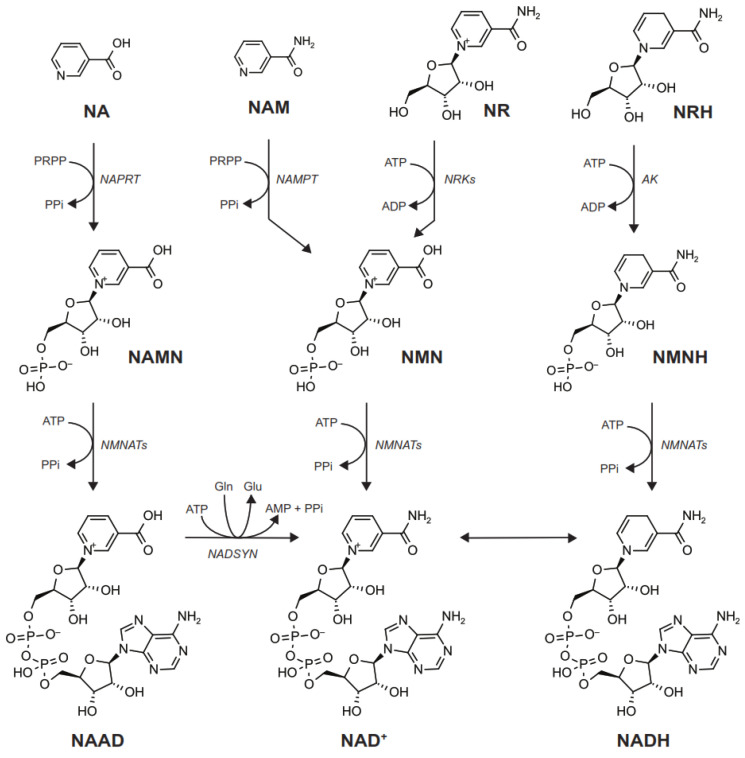Figure 3.
NAD+ precursors use different routes and cofactors for NAD+ synthesis: The graph illustrates the molecular structure, metabolic reactions, and cofactors required for non-ribosylated (i.e., nicotinic acid (NA), nicotinamide (NAM)) and ribosylated (i.e., nicotinamide riboside (NR), dihydronicotinamide riboside (NRH)) precursors to synthesize NAD+. NA and NAM require an initial ribosylation reaction catalyzed by the NA phosphoribosyltransferase (NAPRT) and NAM phosphoribosyltransferase (NAMPT) transferases, using phosphoribosyl pyrophosphate (PRPP) as the ribose donor and releasing inorganic pyrophosphate (PPi). In the case of NA, a second reaction catalyzed by the nicotinamide mononucleotide (NMN) adenylyltransferase enzymes (NMNATs) condenses NA with the adenosine monophosphate (AMP) moiety of ATP, rendering NA adenine dinucleotide (NAAD) and releasing PPi. NAAD is then transformed to NAD+ through the NAD synthase (NADSYN) enzyme. In this reaction, NAAD is amidated to NAD+, while deamidating glutamine (Gln) into glutamate (Glu). In the case of NAM, its ribosylation leads to NMN synthesis. NMN is then transformed to NAD+ via NMNAT enzymes. The two ribosylated precursors, NR and NRH, initiate NAD+ synthesis through a phosphorylation step catalyzed by NR kinases (NRKs) and adenosine kinase (AK), respectively. Upon phosphorylation, NR generates NMN, which can be transformed to NAD+ by NMNATs. In contrast, NRH generates NMNH, which NMNATs transform to NADH, later being oxidized to NAD+.

